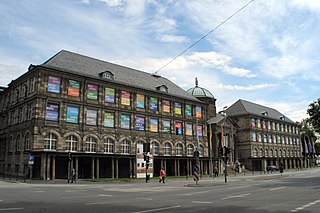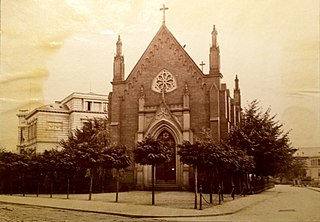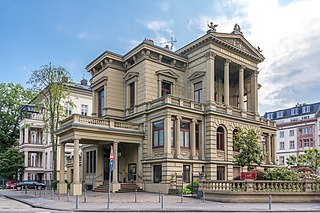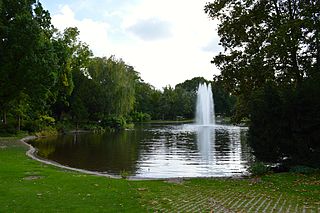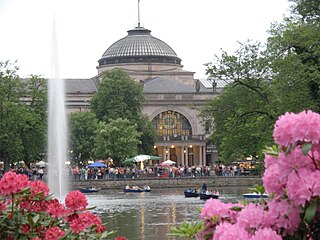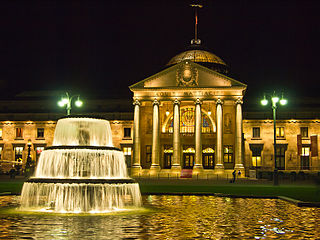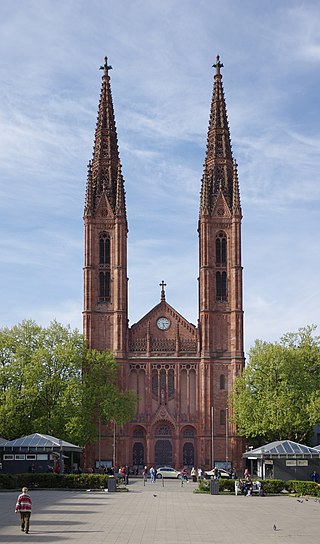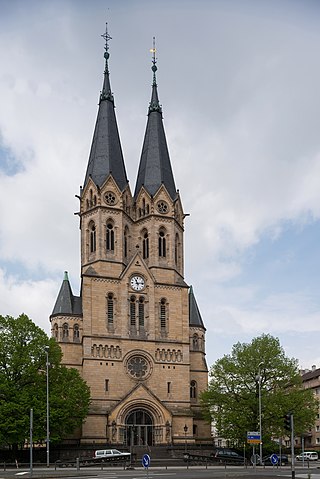Self-guided Sightseeing Tour #3 in Wiesbaden, Germany
Legend
Tour Facts
4.1 km
38 m
Experience Wiesbaden in Germany in a whole new way with our free self-guided sightseeing tour. This site not only offers you practical information and insider tips, but also a rich variety of activities and sights you shouldn't miss. Whether you love art and culture, want to explore historical sites or simply want to experience the vibrant atmosphere of a lively city - you'll find everything you need for your personal adventure here.
Individual Sights in WiesbadenSight 1: Museum Wiesbaden
The Museum Wiesbaden is a two-branch museum of art and natural history in the Hessian capital of Wiesbaden, Germany. It is one of the three Hessian State museums, in addition to the museums in Kassel and Darmstadt.
Sight 2: St. Augustine’s of Canterbury
The Church of St Augustine of Canterbury, commonly known as The English church at Wiesbaden, is a Hessian heritage-listed Anglican parish church located at Frankfurter Strasse 3 in Wiesbaden, Germany. Built in 1865 and named in honour of St Augustine of Canterbury, it was designed in the Gothic Revival style by city engineer Theodor Goetz. The church remains historically, socially, and architecturally significant.
Wikipedia: Church of St Augustine of Canterbury, Wiesbaden (EN), Website
Sight 3: Villa Clementine
Villa Clementine is a historicist villa in Wiesbaden, Germany.
Sight 4: Warmer Damm
The Warmer Damm is a public park in the centre of Wiesbaden, Germany, stretching from the Wilhelmstraße to the southern borders of the Kurpark and lying immediately in front of the Hessian State Theater. It was created between 1860 and 1861 as an English landscape park and includes a pond.
Sight 5: Pillars of the old Kurhaus
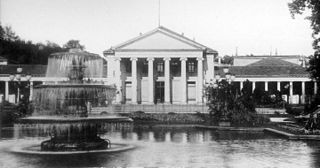
The Old Kurhaus was a community house in Wiesbaden that existed from 1810 until its demolition in 1904, which led to the construction of the new Kurhaus on the same site.
Sight 6: Kurpark
The Kurpark, German for "Spa Park", is a public park in the centre of Wiesbaden, Germany, stretching from the Wilhelmstraße to the southern borders of the district of Sonneberg and lying immediately behind the Kurhaus convention center. It was created in 1852 as an English landscape park and includes a lake where boats can be rented, and a 6 metres (20 ft) tall fountain. It has been described as the most beautiful park in Wiesbaden.
Sight 7: Kurhaus Wiesbaden
The Kurhaus is the spa house in Wiesbaden, the capital of Hesse, Germany. It serves as the city's convention centre, and the social center of the spa town. In addition to a large and a smaller hall, it houses a restaurant and the Wiesbaden Casino, or Spielbank, which is notable for allowing the "highest roulette stakes in Germany", and where Fyodor Dostoyevsky was said to have received the inspiration for his novel The Gambler.
Sight 8: Erbprinzenpalais
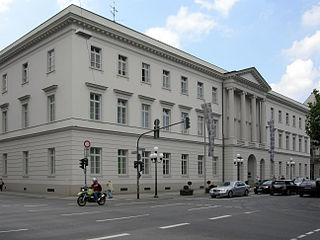
The Erbprinzenpalais on Wilhelmstraße in Wiesbaden is a classicist building built by Christian Zais between 1813 and 1817 for the Hereditary Prince of the Dukes of Nassau. After an eventful history, it now houses the Wiesbaden Chamber of Industry and Commerce, which was founded in 1865.
Sight 9: Sankt Bonifatius
The Church of St. Boniface in Wiesbaden, Hesse, is the main Catholic church in the city. It is dedicated to St. Boniface. The neo-Gothic three-aisled hall church, built by Philipp Hoffmann between 1844 and 1849, dominates the classicist layout of Luisenplatz with its two 68 m high towers.
Sight 10: Ringkirche
The Ringkirche is a Protestant church in Wiesbaden, Germany, built by the architect and builder Johannes Otzen in the years 1892 to 1894 in the neo-Romanesque style. Its twin tower forms the western end of the broad visual axis of Rheinstraße. The Ringkirche was the first Protestant church in Germany to be built according to the so-called Wiesbaden Program, a church building program that was based on Martin Luther's demands for a "priesthood of all believers". The result was a functional central building that became a model for numerous Protestant church buildings in Germany by the end of the First World War. The trend-setting building from the Wilhelminian period has largely retained its original shape to this day.
Share
How likely are you to recommend us?
Disclaimer Please be aware of your surroundings and do not enter private property. We are not liable for any damages that occur during the tours.
GPX-Download For navigation apps and GPS devices you can download the tour as a GPX file.
